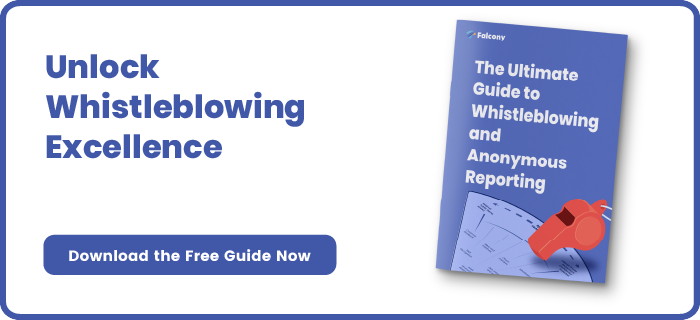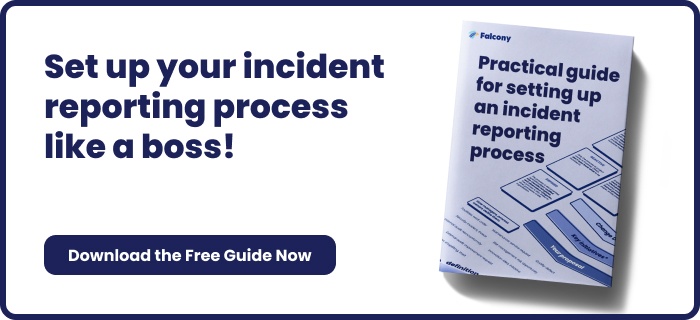ESG Disclosure: Key Trends and Best Practices
Environmental, Social, and Governance (ESG) disclosures have become a cornerstone of corporate responsibility, playing a vital role in shaping the way businesses are viewed by investors, consumers, regulators, and other stakeholders.
As the global focus on sustainability and ethical practices intensifies, companies are facing increasing pressure to provide transparent and comprehensive reports on their ESG performance. This blog explores the evolving trends in ESG disclosure, highlighting the importance of transparency and effective stakeholder involvement.
The Growing Importance of ESG Disclosure
In recent years, there has been a significant shift towards sustainability in the corporate world. Investors, customers, employees, and governments alike are prioritising companies that align with responsible environmental practices, contribute positively to society, and maintain robust governance structures. Consequently, ESG disclosure is no longer a mere trend but a business imperative. Businesses must now communicate their ESG efforts clearly and credibly to maintain trust and meet the expectations of an increasingly discerning audience.
A robust ESG disclosure can enhance a company’s reputation, attract investment, improve customer loyalty, and mitigate risk. It is an essential tool for organisations aiming to demonstrate long-term value creation and resilience. Transparency, however, is key. Stakeholders demand more than just general statements about corporate values—they want measurable, actionable data that can be verified.
Trends in ESG Disclosure
Standardisation and Regulatory Compliance
One of the most prominent trends in ESG disclosure is the increasing push for standardisation. Global organisations such as the International Financial Reporting Standards (IFRS) Foundation and the Global Reporting Initiative (GRI) are working towards creating universally accepted ESG reporting frameworks. These frameworks aim to provide consistency and comparability, enabling stakeholders to assess companies' ESG performance on a level playing field.
In addition to international efforts, national and regional regulations are tightening. For example, the European Union has introduced the Corporate Sustainability Reporting Directive (CSRD), which significantly expands the scope of ESG disclosures for companies operating within the EU. Similarly, the United States Securities and Exchange Commission (SEC) has proposed new rules for climate-related disclosures. These regulatory developments indicate that ESG reporting is moving from a voluntary practice to a mandatory one, and companies must adapt their strategies accordingly.
Focus on Climate and Environmental Impact
Climate change and environmental sustainability are the most prominent aspects of ESG reporting. Increasingly, stakeholders expect businesses to disclose not just their carbon emissions but also their broader environmental impact, including water usage, waste management, biodiversity efforts, and resource efficiency.
There is also a notable trend toward adopting net-zero commitments and carbon offsetting strategies. Companies are being encouraged to move beyond carbon emissions reporting to create comprehensive climate action plans, demonstrating how they will mitigate environmental risks and contribute to global climate goals. Stakeholders are not only interested in a company’s past performance but in their plans for the future.
Social Factors: Diversity, Equity, and Inclusion (DEI)
Social factors are becoming a more integral part of ESG disclosures, with an increasing emphasis on Diversity, Equity, and Inclusion (DEI) within the workforce and across business operations. Companies are under pressure to report on their efforts to foster an inclusive environment, address social inequalities, and contribute to community development. This may include data on gender diversity, racial diversity, employee well-being, and workplace policies that promote fair treatment.
Moreover, stakeholder expectations around the social dimension of ESG extend beyond the workplace. Consumers and investors are increasingly aware of how companies engage with the communities they serve, whether through charitable initiatives, supply chain practices, or human rights advocacy. These factors are increasingly seen as fundamental to long-term corporate success.
Governance and Transparency
Governance is another key area of focus within ESG disclosure. Investors and stakeholders expect companies to maintain high standards of corporate governance, including transparency in decision-making, accountability, and ethical leadership. Areas such as executive compensation, board diversity, and anti-corruption practices are commonly included in ESG reports.
The rise of shareholder activism also highlights the importance of good governance. Stakeholders are becoming more vocal in demanding changes to a company’s governance structures, especially when it comes to sustainability and social responsibility. Effective ESG disclosure in this area can help companies demonstrate that they are committed to ethical practices and long-term value creation, ensuring that governance aligns with stakeholder interests.
Stakeholder Involvement
While ESG disclosure is essential for maintaining transparency, it is equally important for companies to engage with their stakeholders effectively. Traditional one-way communication is no longer enough. To build trust and credibility, companies must embrace a more dynamic, two-way dialogue with their stakeholders, including investors, employees, customers, regulators, and the wider community.
Engaging stakeholders allows companies to gather valuable feedback, address concerns, and align their ESG strategies with the expectations of their key audiences. This approach not only improves the quality of ESG reporting but also enhances a company’s ability to respond to emerging risks and opportunities. Digital tools and platforms, such as stakeholder surveys, social media engagement, and dedicated ESG portals, are becoming indispensable in this process.
Best Practices for Effective ESG Disclosure
To ensure that ESG disclosures are transparent, credible, and valuable to stakeholders, companies must adopt best practices in their reporting. These practices not only enhance the quality of the information provided but also demonstrate a company’s commitment to sustainability and corporate responsibility. Below are some key best practices for effective ESG disclosure:
Adopt Standard Reporting Frameworks
Using recognised and globally accepted reporting frameworks such as the Global Reporting Initiative (GRI), the Task Force on Climate-related Financial Disclosures (TCFD), or the Sustainability Accounting Standards Board (SASB) helps standardise ESG disclosures and ensure they meet the expectations of stakeholders. Adopting these frameworks ensures that reports are consistent, comparable, and aligned with international standards, which builds credibility and trust.
Provide Clear, Measurable Data
Transparency is key in ESG reporting. Companies should provide clear, measurable data that allows stakeholders to assess their performance accurately. This includes quantitative metrics such as carbon emissions, waste reduction, water usage, employee diversity, and board independence. It's also essential to show progress over time, demonstrating how efforts are evolving and driving meaningful impact.
Be Honest About Challenges
Effective ESG disclosures don’t just highlight successes; they should also address challenges. Companies should be candid about areas where they may be falling short or where they face significant obstacles. This approach fosters trust by demonstrating a commitment to continuous improvement and accountability. Stakeholders appreciate transparency about the challenges a company faces in its sustainability journey.
Align ESG Goals with Business Strategy
ESG disclosure should not be a standalone report but should be integrated into the overall business strategy. When ESG goals are aligned with a company’s long-term objectives, it becomes evident that sustainability is embedded in the corporate DNA, not just a marketing tool. Linking ESG performance to financial and operational goals also helps demonstrate the long-term value of sustainability initiatives.
Ensure Accessibility and Clarity
The language used in ESG reports should be clear, concise, and accessible to all stakeholders. Complex jargon or overly technical explanations can alienate non-expert readers. Making the information easily digestible is crucial, and companies should also ensure their reports are available in multiple formats, such as online portals, PDF documents, and interactive dashboards, to improve accessibility.
Engage with Stakeholders Regularly
Engagement with stakeholders is an ongoing process, not just a once-a-year event when the ESG report is published. Regular communication through surveys, interviews, and dialogue forums allows companies to gain valuable insights into the needs and concerns of their stakeholders. It also helps to ensure that ESG strategies remain aligned with stakeholder expectations.
Verify and Audit ESG Data
Third-party verification and auditing of ESG data are essential to ensure credibility. Independent audits not only validate the accuracy of ESG claims but also build confidence among stakeholders. Certification from recognised bodies can further enhance the trustworthiness of ESG disclosures and demonstrate a company's commitment to transparency.
Focus on Forward-Looking Information
While historical data is important, forward-looking information about future goals, plans, and strategies is equally crucial. Companies should outline how they intend to tackle ESG issues moving forward, such as setting specific, time-bound targets for carbon neutrality, diversity, or governance improvements. This helps stakeholders understand how the company is preparing for future challenges and opportunities, rather than just reflecting on past performance.
Ensure Board-Level Involvement
For ESG disclosures to be truly effective, they must be driven at the highest level of the organisation. Involving the board of directors in the ESG reporting process ensures that sustainability goals are aligned with corporate priorities and that there is a clear commitment from the top. Board-level oversight also ensures accountability and facilitates the integration of ESG factors into business decision-making.
Use Technology for Enhanced Reporting
Leveraging technology tools can significantly improve the accuracy and efficiency of ESG reporting. Advanced software solutions allow companies to collect, analyse, and report ESG data in real time. Technologies such as artificial intelligence (AI) and machine learning (ML) can also help businesses identify emerging risks and opportunities, providing a more dynamic and comprehensive view of their ESG performance.
The Future of ESG Disclosure
Looking ahead, ESG disclosure is expected to continue evolving, with increased scrutiny and pressure on companies to provide more detailed, accurate, and forward-looking information. As stakeholders become more sophisticated in their understanding of ESG factors, they will demand more granular data and real-time reporting.
One notable development is the growing integration of ESG factors into financial reporting. This shift will likely accelerate as ESG risks become more closely linked to financial performance. The integration of ESG data with financial metrics will allow businesses to provide a more holistic view of their operations, demonstrating how sustainability and ethical practices contribute to long-term profitability.
Conclusion
ESG disclosure is no longer optional—it is a critical element of corporate transparency and stakeholder involvement. With growing regulatory demands, shifting stakeholder expectations, and a heightened focus on climate action, businesses must adapt and embrace more comprehensive and transparent reporting practices. By doing so, they can build stronger relationships with their stakeholders, mitigate risks, and unlock new opportunities for sustainable growth.
As we move further into the 21st century, the trend toward transparency in ESG disclosure will only intensify, reinforcing the importance of responsible business practices in shaping a more sustainable future.
We are building the world's first operational involvement platform. Our mission is to make the process of finding, sharing, fixing and learning from issues and observations as easy as thinking about them and as rewarding as being remembered for them.
By doing this, we are making work more meaningful for all parties involved.
More information at falcony.io.

Related posts
What is Sustainability Report?
In today’s business world, the focus on sustainability has never been greater.
Companies are...
What is ESG Communication and Transparency?
Environmental, Social, and Governance (ESG) considerations are now firmly embedded in the strategic...
What is ESG Reporting and Why It Matters?
In recent years, Environmental, Social, and Governance (ESG) reporting has emerged as a crucial...







